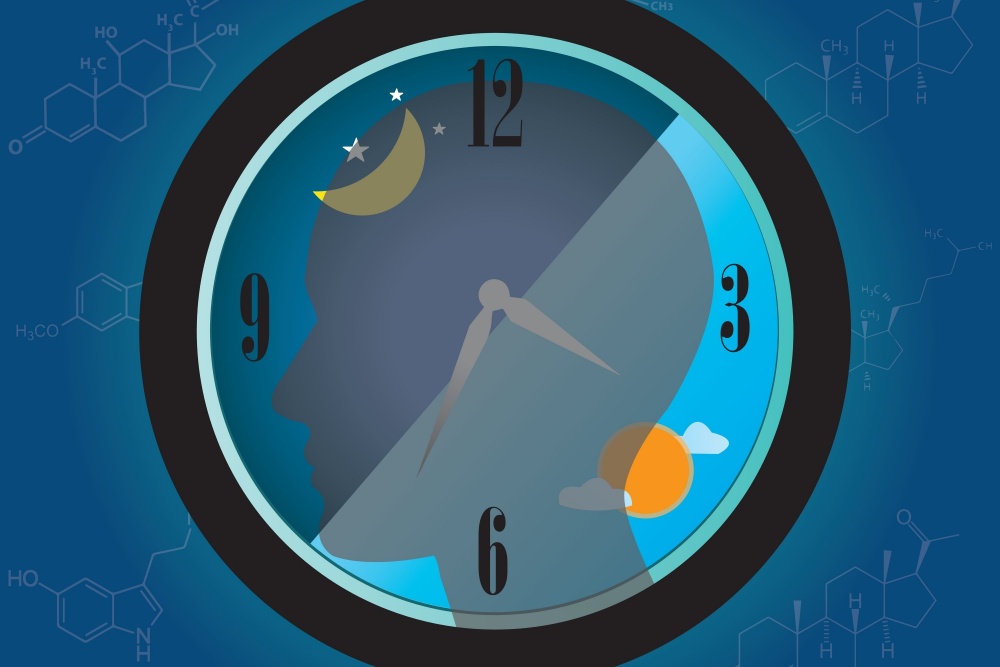 #News
#News
Using the circadian rhythm to fight cancer
Scientists demonstrate how changes in tumor metabolism can influence biological rhythms, paving the way for new therapeutic possibilities
 Disturbances in the circadian rhythm, such as those caused by sleep deprivation, can alter the expression of tumor suppressor genes and oncogenes | Image: Shutterstock
Disturbances in the circadian rhythm, such as those caused by sleep deprivation, can alter the expression of tumor suppressor genes and oncogenes | Image: Shutterstock
With so many chemotherapy treatments targeting genes or proteins that stimulate the growth and replication of tumor cells, cancer studies have begun to focus on new approaches. In recent years, the circadian rhythm has been investigated as a possible new target.
Circadian rhythms, regular cycles approximately 24 hours long, have been observed in almost every form of life, from single-celled organisms to plants and animals. They are linked to environmental stimuli, such as daylight, and metabolic stimuli, such as food consumption.
This all helps to regulate biological activities such as sleep, energy metabolism, the immune system, hormonal functions, and cell proliferation.
In addition to contributing to sleep and mood disorders, obesity, and diabetes, circadian rhythm disorders—caused by sleep deprivation, for example—are also associated with cancer.
Genetic and environmental disruptions of circadian rhythms largely alter the expression and activity of tumor suppressor genes and oncogenes, as highlighted in a review on the subject published in 2021.
In a study published in the Proceedings of the National Academy of Science (PNAS) in July, scientists from the University of Pennsylvania demonstrated that altering the metabolism of tumors in a pancreatic tumor model and in human melanoma tumor cells had a major impact on circadian rhythm.
They paved the way for future research into drugs to treat cancer by increasing or decreasing this rhythm.
“We observed that disrupting circadian rhythms increases tumor pathology,” Amita Sehgal, a professor at the Perelman School of Medicine at the University of Pennsylvania and leader of the study, told Science Arena.
The researcher notes that one approach already used in clinical settings that takes circadian rhythms into account is administering chemotherapy at a certain time of day, based on the circadian rhythm of the patient or the tumor.
Interference in metabolic activity
In the study, the scientists first analyzed pancreatic adenocarcinoma—a tumor with few treatment options—in animal models.
Initially, they observed that a significant increase in metabolic rate disrupts the circadian rhythm, which only returns to normal after metabolic activity is reduced again using medication.
The group also analyzed a panel of melanoma cell lines taken from human patients. Those with the greatest metabolic activity also had the weakest circadian rhythm.
“These findings provide an explanation for the diversity of circadian phenotypes in cancer, which has implications for understanding cancer progression and treatment,” the authors wrote.
“We believe that circadian rhythms are broadly relevant to the pathogenesis and treatment of cancer. However, because each tumor is different to the next, the specific effects of circadian rhythms may vary,” explained Amita Sehgal in an email.
In the melanoma line with the lowest metabolic rate, the researchers increased oxidative phosphorylation, a cellular process that regulates metabolism. As a result, the magnitude of circadian oscillation decreased.
More importantly, inhibition of phosphorylation increased circadian rhythms only in the lineage in which glycolysis was also low, which clearly signals a state of low metabolism.
“In pancreatic cancer, we saw that inhibiting metabolic activity improved the circadian rhythm in the tumor, allowing it to be more aligned with the time of day,” Sehgal says.
“This study basically shows that circadian rhythms are dictated by metabolism. In the future, we may be able to manipulate metabolism to improve circadian rhythms and treat cancer,” predicts the scientist.
*
This article may be republished online under the CC-BY-NC-ND Creative Commons license.
The text must not be edited and the author(s) and source (Science Arena) must be credited.


